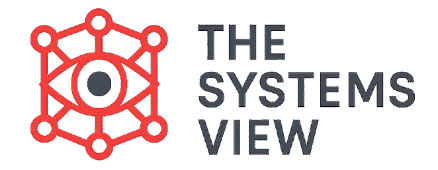We’ve explored Personal Mastery, which is all about individual growth. Now, let’s look at the second of Peter Senge’s disciplines: Mental Models. This discipline is about understanding the powerful, often hidden, ideas that shape how we see the world and make decisions.
Think of mental models as special lenses or filters in your mind. They are the deep beliefs, unspoken rules, and pictures you carry about how things work. For example, you might believe “people are always lazy” or “our customers only care about price.” These hidden ideas control what you notice, how you think, and what actions you take. Often, we don’t even know we have these filters.
What Are Mental Models?
Mental models are like our internal rulebooks or maps for understanding reality. They are:
- Deeply Ingrained: They have been built up over years from our experiences, education, and culture.
- Often Unconscious: We use them without even realizing it. They are like breathing—we just do it.
- Powerful: They determine how we interpret what we see, hear, and feel. They shape our judgments and actions.
For example, if a manager’s mental model is “employees only work hard when watched,” they might create very strict rules and constant checks. This mental model then shapes how they act.
Why Are Mental Models Important?
Mental models are incredibly important because they can either help us learn and grow, or hold us back.
- They can limit learning: If our mental models are old or wrong, they stop us from seeing new possibilities. They make us blind to new ideas or solutions that don’t fit our existing view.
- They shape decisions: Our decisions are not just based on facts; they are heavily influenced by our mental models. If the model is flawed, the decision might be too.
- They affect communication: Different mental models can lead to misunderstandings between people. What seems clear to one person based on their “map” might be confusing to another with a different “map.”
In a learning organization, people need to be able to see and challenge these hidden beliefs. This helps them adapt faster, make better choices, and work together more effectively.
How to Work with Mental Models
Working with mental models is about becoming more aware of them and being willing to change them when needed. It’s a journey of openness and self-awareness.
Becoming Aware of Our Mental Models
The first step is to recognize that we even have mental models. Ask yourself: “What am I assuming about this situation?” “Why do I think this is the only way?” “What beliefs do I hold about this person or problem?” This self-questioning helps bring those hidden thoughts to the surface.
Bringing Them to the Surface
It can be hard to see our own hidden beliefs. One helpful tool is called the Ladder of Inference. This tool helps us understand how we go from observing facts to making assumptions and then drawing conclusions. By climbing down the ladder, we can see where our assumptions come from and if they are true. Discussing ideas openly with others and asking “What am I assuming here?” is also very helpful.
Testing and Challenging Mental Models
Once you become aware of your mental models, the next step is to test them. Are they really true? Do they still work in today’s world? You can test them by:
- Looking for information that doesn’t fit your model.
- Asking others what they think.
- Trying a new approach that goes against your old belief. Being open to being wrong is key here.
Important: The goal is not to get rid of all mental models, but to make them conscious and flexible. We need to be able to update our “maps” when the “territory” changes.
Being Open to Changing Mental Models
True learning happens when we are willing to let go of old ideas that no longer serve us. This means being ready to adopt new, more helpful ways of thinking. It’s about having a curious mindset that embraces new information, even if it feels uncomfortable at first. This openness allows for true innovation and growth.
Mental Models and Systems Thinking
Understanding mental models is deeply connected to Systems Thinking. Our mental models shape how we see the connections and patterns in a system.
- If your mental model is too narrow, you might only see a small part of the system, missing how everything else is connected.
- By becoming aware of your own hidden beliefs, you can better see how these beliefs might be affecting the whole system. For example, a mental model that “customers are always difficult” might lead to a system where customer service is poor.
- Challenging mental models helps us break free from old ways of looking at problems, allowing us to see new systemic solutions.
Mental Models in the Learning Organization
The discipline of Mental Models greatly helps a learning organization in many ways:
- Better Team Learning: When team members understand each other’s mental models, they can communicate better and avoid misunderstandings. This helps them learn as a group.
- Stronger Shared Vision: Hidden mental models can often work against a shared vision. By bringing them out in the open, teams can build a vision that everyone truly believes in, based on common understanding.
- Faster Adaptation: Organizations can change more quickly when their people are open to changing their fundamental beliefs about how the world works.
Conclusion
Mental Models are the unseen forces that guide our actions and limit our learning if not understood. By practicing the discipline of Mental Models, individuals and organizations learn to uncover, test, and update their deepest assumptions. This critical skill allows for clearer thinking, better communication, and a much greater ability to adapt and innovate. By shining a light on these hidden filters, organizations empower themselves to see the world as it truly is, opening the door to genuine growth and transformation.



